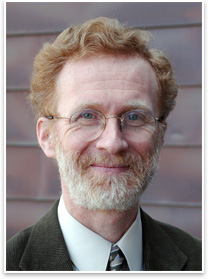
Thomas R. Fisher, Assoc. AIA Summary: Thomas R. Fisher, Assoc. AIA, is dean of the College of Architecture and Landscape Architecture at the University of Minnesota and co-editor of Architectural Research Quarterly. The author of three books, including In the Scheme of Things: Alternative Thinking on the Practice of Architecture, he is one of the profession’s most innovative thinkers and has authored numerous book chapters and over 250 major articles. His essays have appeared in Design Quarterly, Architectural Record, and other leading journals, including Progressive Architecture and Building Renovation, for both of which he was editorial director.
Education: BArch from Cornell University; graduate degree in Intellectual History from Case Western Reserve. Hobbies: I paint, write music, play guitar, and I write. Writing is as much for avocation as it is for vocation. Career arc: Back in the ‘80s, I worked with some architecture firms in Ohio and Connecticut, then as a state historical architect for Connecticut. But then I became an editor for Progressive Architecture magazine in 1982. Since 1996, I’ve been an educator as well. Last book read: It’s actually the book that I’m teaching from: Theorizing a New Agenda for Architecture: An Anthology of Architectural Theory 1965–1995, edited by Kate Nesbitt. I’m teaching a theory course. Last book read for fun: The Devil in the White City, by Erik Larson. I read that earlier this summer. Source of inspiration: One of the people who had a big impact on my life was a writer named Lewis Mumford, whom I was fortunate to meet when he was elderly and I quite young. He told me that architecture is about changing and improving the world. His advice was to do everything possible to take that seriously. He had a huge impact on my career. He was a very early inspiration for me, among many. There have been many people who have helped. Place you’d most like to visit: India. It’s a place I’ve never been, but we have a lot of Indian students and I’ve learned a lot about it. I’ve been to many of the usual places in Europe and Asia, but India is a country that’s fascinating. Greatest professional challenge: Well, being a dean is a bit like wearing two different hats. On the one hand, I’m sort of like a CEO of a $24 million operation, which is the size of this college. So in some sense I’m like a business person. On another level, I’m like the mayor of a town, because being a dean is such that faculty are like the residents of your community. They’re more or less permanent unless they decide they want to leave, so, like a mayor, you have to move the organization forward with the people you have who are residents in your community. Being a dean is a constant going back and forth between being a politician and a business person. Issues facing interns: I think [among] the real challenges that interns face is the fact that in the next 100 years, we’re going to have global climate change such as we’ve never had before. We have probably 2 billion people who are ill-housed. We have this growing gap between wealth and poverty. We have all of these things happening within the lifetime of these interns, and a lot of it has to involve design and architecture. I think the real challenge goes beyond getting a good job and adjusting to the new ways that people work to thinking about how we address these huge problems in the world right now. There’s more need now for architecture than there’s ever been in the history of humankind. It’s just that it’s a different kind of need than we’re typically prepared to deal with. For example, we have such a need for housing around the world, and yet we don’t always know how we can help. I think part of the challenge of this next generation is to figure out something that I’ve talked about recently: envisioning a public health version of architecture where architects aren’t just involved with individual clients in the way doctors are involved with individual patients. We need a whole new profession along the lines of public health care where architects can help hundreds, thousands, maybe even millions of people all at once. We basically need to organize some part of the profession in the same way that medicine organized a part of itself to become the profession of public health. We need a new kind of profession that involves architects and architecturally educated people, but applies our skills in a whole new way. Advice for young architects: Think broadly about your skills. Do
everything you can to improve the world and don’t be afraid
to join with other disciplines in addressing the problems of the
world. A lot of these issues we now face involve architecture and
a lot of other fields if we’re really going to have an impact.
A big part of this is an openness to work, not only with the typical
fields that we work with like engineering and landscape architecture,
but to be willing to work with economists and public health officials
and doctors and lawyers and humanitarian groups and begin to be open
to a much more hybrid form of practice than we’ve typically
done in the past. |
||
Copyright 2006 The American Institute of Architects. All rights reserved. Home Page |
||
news headlines
practice
business
design

 Occupation:
Occupation: